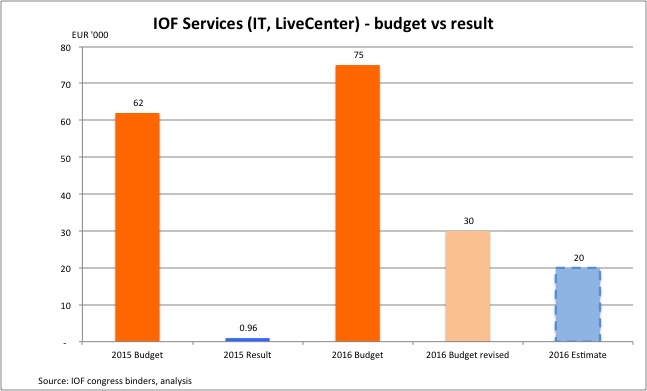I am just getting curious, if there will be any questions on the Presidents’ Conference in Tartu regarding the critical financial situation of the Federation.
The IOF finances have deteriorated to a point where normal business variation may result in bankruptcy, not to talk about the impact of an unexpected event.
The presidents of IOF member organisations will meet the President, the Council and the Secretary General on Wednesday, 5 July, during WOC 2017. The Presidents’ Conference is an advisory body to the IOF, typically meets every second year in between General Assemblies. Yet, all key participants are the same as on a General Assembly, hence it gives the opportunity to discuss all important IOF questions with the members.
The agenda for this years Presidents’ Conference was sent on 24 April
• Strategic Directions 2018-2024
• Strategic Planning Calendar for IOF Events
• IOF Sustainability Policy
• Update on the IOFs Anti-doping work
• Reports on on-going activities
No mention of financial questions, whatsoever, though it was clear in January that IOF finances took a nosedive after years of steady decline (see here). One may – mistakenly – believe that there are two topics where overall finances may be addressed, but that is not the case.
The strategic directions document is light on numbers (contains only dates and page numbers), despite the sad fact that finances often present hard constraints to strategic dreams.
The IOF Sustainability Policy is all about environmental impact, while the sustainability of the IOF as a financially viable organisation is taken for granted.
(Interesting to note that the Consultation Paper on IOF Sustainability includes fascinating ideas like using Eventor to make participants of orienteering events pay an environment fee dependent on where the participant travel from – but that deserves a separate post).

Yet, the Council knew already in January that the 2016 and 2017 combined financial results were expected to be €160,000 worse than the budgets the Council presented to the General Assembly 5 months before. (see 12.2 and 12.5 in Council Minutes #183).
Compare this with the IOF reserves of €114,630 at the end of 2015, and an estimated €77,000 at the end of 2016. The uncertainty in the budget forecast shown above is comparable to the reserves left after the continued decline since 2008. Another downward revision comparable to what happened in 2016 or expected for 2017 would mean that the IOF looses all its reserves. That is called bankruptcy.
Continue reading “Presidents’ Conference – will there be questions?”







